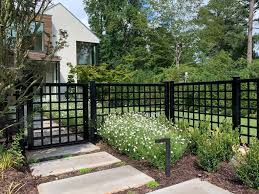
Fencing the Future: Adapting Boundaries to Change
Above their sensible energy, fences carry profound symbolic value in individual societies, symbolizing methods of acquisition, personality, and societal boundaries. As physical manifestations of limitations, fences shape our perceptions of area and effect our interaction using the constructed setting. Let’s delve into the symbolic significance of fences (ploty) and discover why they may be not only structures—they are signs of human being culture and community.
1. Ownership and Territory:
Fences represent management and territorial restrictions, marking where by 1 home finishes and the other begins. By identifying restrictions, fences create a sense of ownership and control over property, reinforcing personal or group personality. In agricultural configurations, fences delineate job areas and pastures, signifying acquisition of territory and sources. Likewise, in metropolitan situations, fences demarcate personal home from public room, asserting ownership and exclusivity.
2. Social Department and Exclusion:
fences (ploty) also can signify societal divisions and exclusions in community. Higher wall surfaces and barriers may signify separation and inequality, developing actual barriers that separate neighborhoods depending on socio-financial status or another elements. On the other hand, fences with open gateways and low surfaces represent inclusivity and relationship, inviting connection and cultivating feelings of local community. The look and exposure of fences reveal underlying social dynamics and power constructions.
3. Social Identity:
In several civilizations, fences maintain deeply cultural relevance and they are imbued with significance that displays societal principles and cultures. For example, in some ethnicities, elaborate fences are signs of status and reputation, showing prosperity and wealth. On the other hand, in other civilizations, simple and useful fences can be appreciated with regard to their practicality and utilitarianism. Comprehending the ethnic context of fences helps us enjoy their symbolic importance in several communities.
4. Mental Boundaries:
Fences could also stand for mental borders that determine personal room and autonomy. By creating actual boundaries, fences give people with a sense of stability and privacy, permitting them to determine borders and manage usage of their personal room. This sensation of boundary handle is essential for maintaining emotional well-becoming and interpersonal interactions, as it enables people to assert their autonomy and safeguard their personal limitations.
5. Environment Impact:
The proliferation of fences has ecological ramifications, especially in natural countryside and wild animals environments. Extensive fencing can fragment habitats and affect wild animals corridors, impacting biodiversity and ecosystem wellness. Nevertheless, eco-pleasant fencing alternate options, like animals-pleasant designs and permeable obstacles, offer you options that stability individual requires with environment efficiency. By lessening their ecological footprint, fences can contribute to the preservation of organic countryside and wild animals environments.
In conclusion, fences are not only actual structures these are emblems that symbolize sophisticated interpersonal, cultural, and mental health dynamics. As guardians of restrictions, fences design human being connections and scenery, showing and strengthening societal ideals and norms. Admiring the symbolic significance of fences enriches our comprehension of the developed surroundings and our relationship with all the territory.